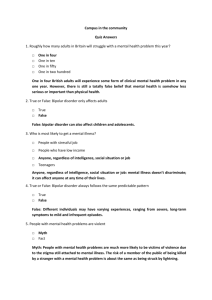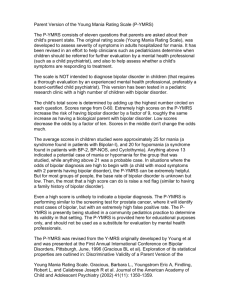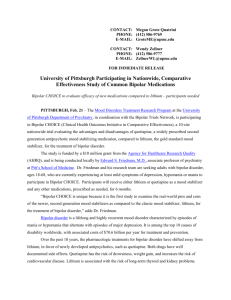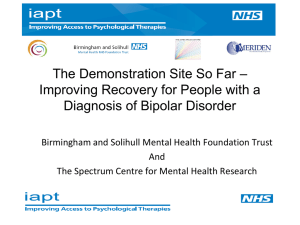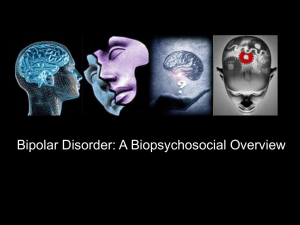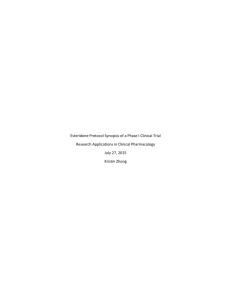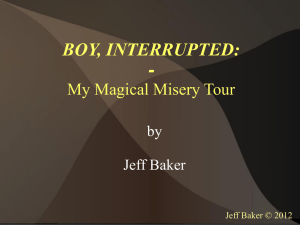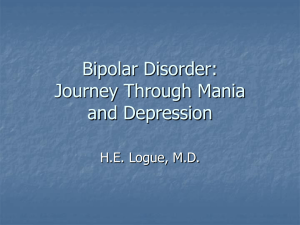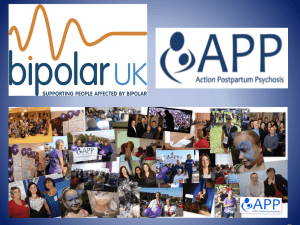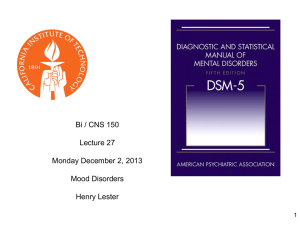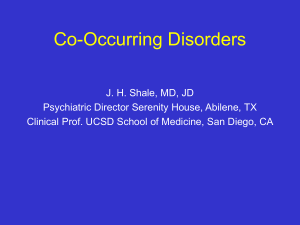Bipolar II Jason Luis Gabriel
advertisement
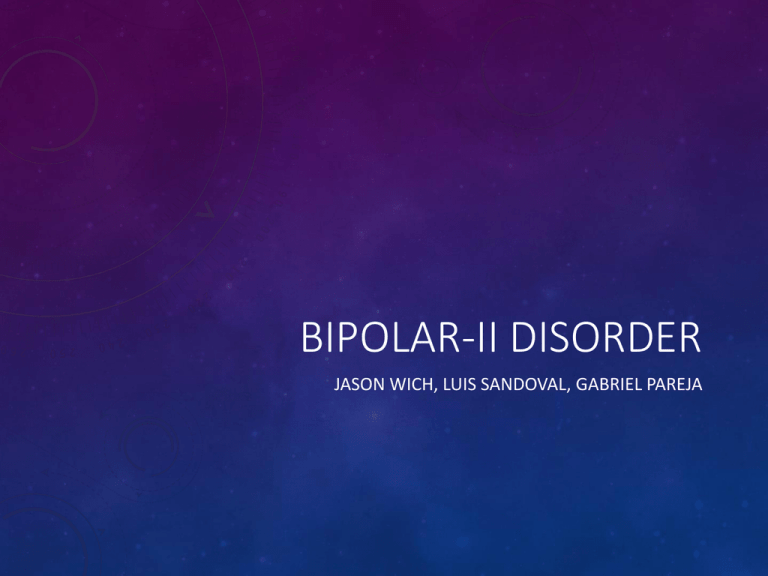
BIPOLAR-II DISORDER JASON WICH, LUIS SANDOVAL, GABRIEL PAREJA SYMPTOMS • Alternating states of mania and depression • Difference between Bipolar I and II DIAGNOSIS • Diagnosed the same way as Bipolar I disorder • The line between the two is not clear cut PREVALENCE • DSM IV says .5% of population have specifically Bipolar II • Research has found it to be around 5% • Underdiagnosed in many areas CAUSES • It is unknown what causes any forms of bipolar disorder • There are some links to genetic causes, however the cause is not clearly defined (Phelps 2007) • Environmental factors have a strong influence on the onset of the disorder • Cognitive processes similar to those expressed in unipolar depressed patients has been seen frequently in bipolar individuals (Alloy et. al. 2005) CULTURAL FACTORS • Across all cultures, individuals with bipolar disorder had similar symptoms and additional mental health problems • High-income countries have higher rates of the disorder than low-income countries • Collectivist cultures see lower rates of the disorder (Gardner 2011) GENDER VARIATIONS • Age of onset of bipolar II disorder for females is lower than that of males and were more likely to have mixed depressive episodes • No noticeable differences on the hypomanic side of the disorder, however differences are more noticeable on the depressive side (Benazzi 2006) TREATMENT APPROACHES • Therapeutic treatments of bipolar II differ from bipolar I • Psychoeducation has been shown to have success in treating bipolar II • Family-focused therapy also has been shown to be effective (Phelps 2001) • Medicines known as “mood-stabilisers”, lithium and valproate most common ETIOLOGY AND THERAPY • Social support has been seen to be a trigger for the onset of bipolar disorder, showing that increased positive feedback from family/friends can help treat the disorder WALKER-TESSNER MODEL Family Interaction Biological: Genes Fluctuating Levels of Neurotransmitters Bipolar 2 Disorder CITATIONS • Alloy, L., Abramson, L., Urosevic, S., Walshaw, P., Nusslok, R., & Neeren, A. (2005). The psychosocial context of bipolar disorder: Environmental, cognitive, and developmental risk factors.Clinical Psychology Review, 25, 1043-1075. • Angst, Jules. (1998). The emerging epidemiology of hypomania and bipolar II disorder. Journal of Affective Disorders, 50,2, 143-151. • Benazzi, F. (2006). Gender differences in bipolar–II disorder. European Archives of Psychiatry and Clinical Neuroscience,256(2), 67-71. • Gardner, A. (2011, March 7). U.S. has highest bipolar rate in 11-nation study.CNN Health. Retrieved March 2, 2014, from http://www.cnn.com/2011/HEALTH/03/07/US.highest.bipolar.rates • Judd, L. et. Al. "A Prospective Investigation of the Natural History of the Long-term Weekly Symptomatic Status of Bipolar II Disorder FREE." JAMA Network. JAMA, n.d. Web. 03 Mar. 2014. <http://archpsyc.jamanetwork.com/article.aspx?articleid=207252#METHODS>. • Phelps, J. (n.d.). 300 pages on complex mood and anxiety problems. Bipolar II, Mood Swings without Mania; Brain Tours; Stress andDepression; Hormones and Mood; and more.... Retrieved March 2, 2014, from http://www.psycheducation.org/

